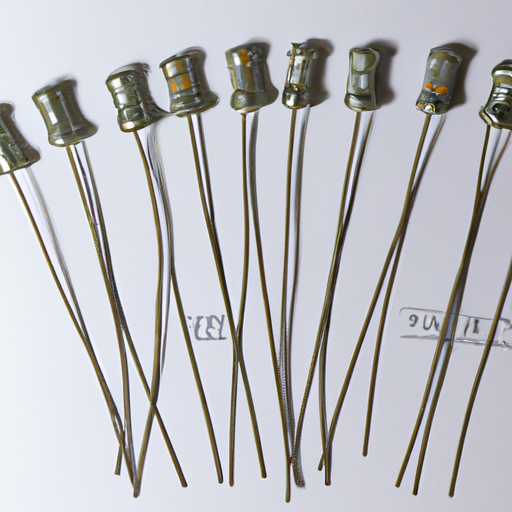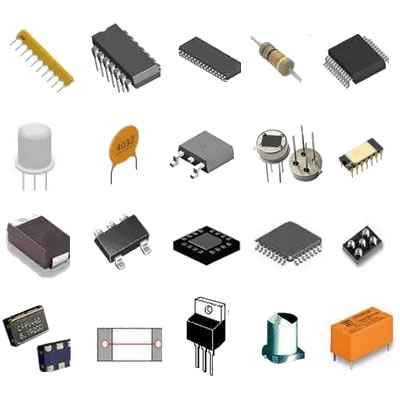The Latest Resistor Supply Specifications
I. Introduction
Resistors are fundamental components in electronic circuits, serving the critical function of controlling current flow. They are essential for voltage division, signal attenuation, and biasing active components. As technology advances, the specifications governing resistor supply become increasingly important for engineers and designers. This article aims to inform readers about the latest resistor supply specifications, highlighting recent developments, key specifications, industry standards, and future trends.
II. Understanding Resistor Specifications
A. Basic Resistor Parameters
To appreciate the latest specifications, it is essential to understand the basic parameters that define resistors:
1. **Resistance Value (Ohms)**: This is the primary characteristic of a resistor, indicating how much it resists the flow of electric current. Resistance values are typically specified in ohms (Ω) and can range from fractions of an ohm to millions of ohms.
2. **Tolerance**: Tolerance indicates the precision of the resistor's resistance value. It is expressed as a percentage and shows how much the actual resistance can vary from the stated value. Common tolerances include ±1%, ±5%, and ±10%.
3. **Power Rating (Watts)**: This specification indicates the maximum power a resistor can dissipate without being damaged. It is crucial for ensuring that resistors operate within safe limits, preventing overheating and failure.
4. **Temperature Coefficient**: This parameter measures how much a resistor's resistance changes with temperature. It is expressed in parts per million per degree Celsius (ppm/°C) and is vital for applications requiring stable performance across varying temperatures.
B. Types of Resistors
Resistors come in various types, each suited for specific applications:
1. **Fixed Resistors**: These resistors have a constant resistance value and are the most common type used in circuits.
2. **Variable Resistors (Potentiometers)**: These allow for adjustable resistance, making them ideal for applications like volume controls and tuning circuits.
3. **Specialty Resistors**: This category includes thermistors (temperature-sensitive resistors) and photoresistors (light-sensitive resistors), which are used in specific applications requiring unique characteristics.
III. Recent Developments in Resistor Technology
A. Advances in Materials Used for Resistors
Recent advancements in materials have significantly impacted resistor performance:
1. **Carbon Film vs. Metal Film Resistors**: While carbon film resistors are cost-effective, metal film resistors offer better stability and lower noise, making them preferable for high-precision applications.
2. **Use of Thin-Film Technology**: Thin-film resistors provide superior performance in terms of temperature stability and tolerance, making them ideal for high-end applications.
B. Innovations in Manufacturing Processes
The manufacturing processes for resistors have evolved, leading to improved quality and reliability:
1. **Automation and Precision in Production**: Automation has enhanced the precision of resistor manufacturing, reducing defects and ensuring consistent quality.
2. **Impact on Quality and Reliability**: With advanced manufacturing techniques, modern resistors exhibit better performance characteristics, including lower noise and higher stability.
C. Environmental Considerations
As environmental concerns grow, the resistor industry is adapting:
1. **RoHS Compliance and Lead-Free Options**: Many manufacturers are now producing resistors that comply with the Restriction of Hazardous Substances (RoHS) directive, ensuring that products are free from harmful materials.
2. **Sustainable Materials and Practices**: The use of sustainable materials and eco-friendly manufacturing practices is becoming more prevalent, reflecting a commitment to environmental responsibility.
IV. Key Specifications in Current Resistor Supply
A. Standard Specifications for Commercial Resistors
The E12 and E24 series are standard resistor value series that provide a range of common resistance values and tolerances. These series help designers select appropriate resistors for their applications.
B. High-Performance Resistor Specifications
High-performance resistors are designed for demanding applications:
1. **Low Noise and High Stability**: These resistors are essential in audio and precision measurement applications where signal integrity is critical.
2. **High Power and High Voltage Ratings**: Resistors with these specifications are necessary for power electronics and high-voltage applications, ensuring safe and reliable operation.
C. Specialty Resistor Specifications
Specialty resistors cater to specific needs:
1. **Precision Resistors for Critical Applications**: These resistors are designed for applications requiring exact resistance values, such as in medical devices and aerospace technology.
2. **Resistors for High-Frequency Applications**: High-frequency resistors are optimized for RF applications, ensuring minimal signal distortion and loss.
V. Industry Standards and Compliance
A. Overview of Relevant Standards
Several industry standards govern resistor specifications, including those set by the International Electrotechnical Commission (IEC) and the American National Standards Institute (ANSI). These standards ensure that resistors meet specific performance and safety criteria.
B. Importance of Compliance for Manufacturers and Consumers
Compliance with industry standards is crucial for manufacturers to ensure product quality and reliability. For consumers, it provides assurance that the components they use will perform as expected.
C. Certification Processes and Quality Assurance
Manufacturers often undergo rigorous certification processes to demonstrate compliance with industry standards. This includes quality assurance measures that ensure consistent performance across production batches.
VI. Supply Chain Considerations
A. Global Sourcing of Resistors
The resistor supply chain is global, with major manufacturers and suppliers located worldwide. Understanding the dynamics of this supply chain is essential for ensuring a reliable supply of components.
B. Impact of Geopolitical Factors on Resistor Supply
Geopolitical factors can significantly impact the availability and pricing of resistors. Trade policies, tariffs, and international relations can create challenges for manufacturers and consumers alike.
C. Strategies for Ensuring a Reliable Supply of Resistors
To mitigate supply chain risks, companies can adopt strategies such as diversifying suppliers, maintaining inventory buffers, and investing in local sourcing options.
VII. Future Trends in Resistor Supply Specifications
A. Predictions for Technological Advancements
As technology continues to evolve, we can expect advancements in resistor technology, including improved materials and manufacturing processes that enhance performance and reliability.
B. Emerging Applications and Their Impact on Resistor Design
The rise of IoT and smart devices is driving demand for resistors with specific characteristics, such as low power consumption and miniaturization, influencing future designs.
C. The Role of IoT and Smart Devices in Shaping Resistor Specifications
The integration of resistors in IoT devices will necessitate new specifications that cater to the unique requirements of these applications, including wireless communication and energy efficiency.
VIII. Conclusion
Understanding the latest resistor supply specifications is crucial for engineers and designers working in the ever-evolving field of electronics. Staying updated on advancements in technology, industry standards, and supply chain dynamics will enable professionals to make informed decisions and ensure the reliability of their designs. As we look to the future, the role of resistors in technology will continue to grow, driven by innovation and the increasing complexity of electronic systems.
IX. References
1. International Electrotechnical Commission (IEC) Standards
2. American National Standards Institute (ANSI) Publications
3. Manufacturer Technical Datasheets
4. Industry Journals and Publications on Resistor Technology
This comprehensive overview of the latest resistor supply specifications provides valuable insights for anyone involved in electronics design and manufacturing, ensuring they are well-equipped to navigate the complexities of resistor selection and application.





